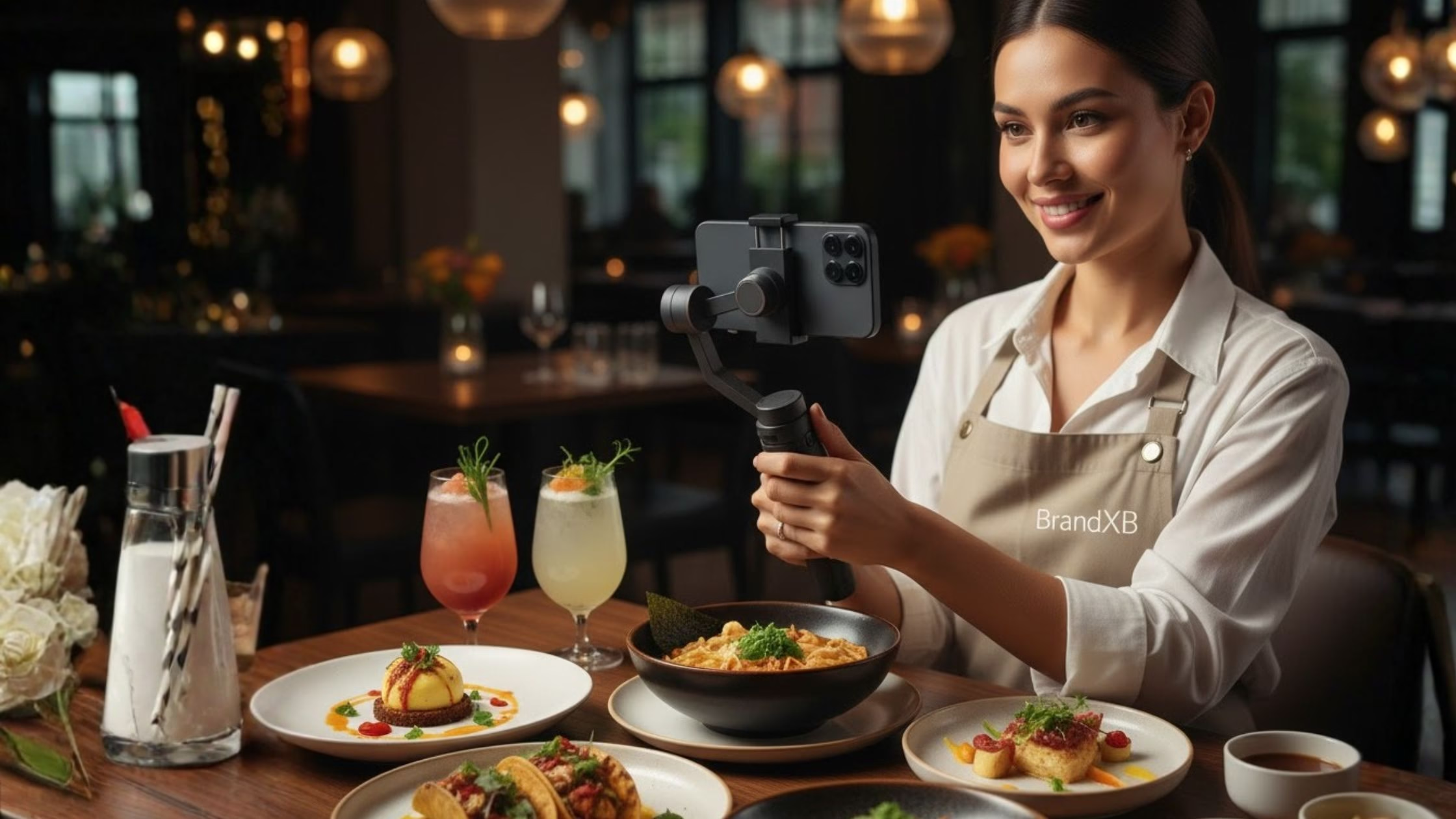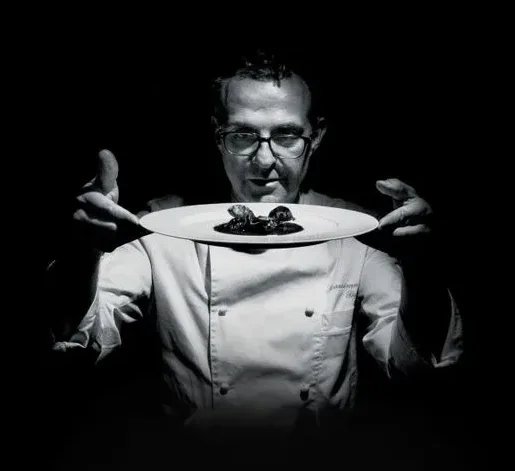Why Influencer Marketing Is the New Growth Engine
In today’s digital-first world, influencer marketing strategy isn’t just a buzzword—it’s a data-driven growth channel. From café chains in Dubai to luxury brands in Riyadh, companies across the GCC are investing in creator collaborations that deliver measurable ROI.
Recent studies show that brands earn an average of $5.78 for every $1 spent on influencer marketing. That’s a stronger return than most paid ad campaigns. In the food and beverage (F&B) industry, the numbers are even more impressive—food content averages 3% engagement on TikTok, nearly double the global benchmark.
But how can your brand tap into that success? Whether you run a restaurant, retail store, or service-based company, mastering a scalable influencer marketing strategy is the key. Let’s explore the 7-step GCC blueprint that’s helping both food brands and cross-industry businesses transform followers into loyal customers.
Understand Why Influencer Marketing Outperforms Traditional Ads
The Data: $5.78 Return on Every Dollar Spent
Traditional ads struggle to earn trust in a world where users scroll past thousands of brand messages daily. Influencers, on the other hand, build credibility through authentic storytelling.
When a Dubai-based food blogger reviews your restaurant’s new dessert, it doesn’t feel like an ad—it feels like a recommendation from a trusted friend.
That trust translates directly into conversions. According to global surveys, 86% of consumers make a purchase inspired by an influencer at least once per year.
Trust vs. Ads: The Psychology Behind the Shift
In the GCC, word-of-mouth has always been a powerful cultural force. Influencers amplify that effect digitally, turning social trust into measurable sales. Especially in sectors like F&B and beauty, a single viral TikTok video can drive footfall and delivery app orders within hours.
Step 1: Identify the Right Influencers for Your Niche
Micro-Influencers for Maximum Engagement
Micro-influencers (10K–50K followers) often outperform celebrities. Their audiences are smaller but highly loyal and interactive. In GCC markets—especially the UAE and Saudi Arabia—micro-creators dominate on TikTok, Instagram, and Snapchat, generating 3x higher engagement rates compared to macro influencers.
For example, a micro food influencer posting daily café reviews in Dubai may influence hundreds of locals to visit within days.
Nano vs. Macro: Budgeting Smartly
- Nano influencers (1K–10K): Ideal for hyper-local restaurant launches.
- Micro influencers (10K–50K): Perfect for community-driven engagement.
- Macro influencers (100K+): Best for brand visibility and national-scale promotions.
💡 Pro Tip: Combine tiers in your strategy. Let macro influencers drive awareness while micro creators fuel engagement and conversions.
Step 2: Craft Content That Converts
Mastering the “First Bite” Moment
Food brands, in particular, live and die by visuals. The “first bite”—that slow-motion cheese pull or coffee pour—captures attention instantly.
For non-F&B brands, this translates to the “first impression”: the unboxing moment, the product reveal, or the “before/after” transformation.
The Power of UGC (User-Generated Content)
UGC builds relatability. Let influencers show real experiences—messy kitchen moments, behind-the-scenes clips, and genuine reviews.
Authentic content drives emotional connection and boosts the brand’s E-E-A-T signals (Experience, Expertise, Authoritativeness, Trustworthiness).
Step 3: Localize for GCC Audiences
A strategy that works in New York won’t necessarily succeed in Dubai or Jeddah. Localization is essential.
- Language: Mix Arabic and English for cultural relatability.
- Timing: Align campaigns with Ramadan, UAE National Day, or Dubai Shopping Festival.
- Cultural nuances: Use modest visuals, respect traditions, and highlight community spirit.
BrandXB’s regional campaigns show that brands that localize messaging see up to 40% higher engagement in GCC markets.
Step 4: Measure ROI Beyond Likes and Follows
Trackable KPIs That Matter
Vanity metrics like likes and impressions don’t tell the full story. Instead, track:
- Promo codes used (via Talabat, Deliveroo, etc.)
- Unique affiliate links
- In-store footfall and redemption rates
- Cost-per-acquisition (CPA) vs. Return-on-Ad-Spend (ROAS)
Geo-Targeted Data for Precision
Use influencer audience analytics to ensure your content reaches the right city (Dubai, Doha, Riyadh). Influencer demographics should match your target customers, not just look good on paper.
Step 5: Build Long-Term Influencer Partnerships
Influencer marketing is not a one-time campaign—it’s a relationship channel.
The best-performing brands in the UAE work with the same creators repeatedly, turning them into brand ambassadors.
This consistency reinforces authenticity and strengthens your brand story over time. Consider annual contracts or ambassador programs with your top-performing influencers.
Step 6: Study Real Campaigns That Worked
Oreo’s UGC Challenge: Simplicity Wins
Oreo launched a “Twist, Lick, Dunk” TikTok challenge that turned a century-old product into a Gen Z trend. The secret? Simplicity + shareability.
Crumbl Cookies’ Social Strategy
Crumbl leveraged weekly flavor reveals and local influencer partnerships to dominate TikTok. The brand’s consistency and clear calls to action turned videos into a growth engine.
Both examples show that the formula for influencer success is universal—creative simplicity backed by consistent posting.
Step 7: Partner with the Right Agency
Influencer marketing success isn’t luck—it’s strategy. Partnering with a data-driven agency ensures that you get the right creators, creative assets, and campaign analytics in one ecosystem.
At BrandXB, we specialize in F&B, retail, and franchise marketing across the GCC. Our influencer programs are built to deliver trackable ROI—not vanity metrics.
Conclusion: Build an Influencer Marketing Strategy That Scales
An effective influencer marketing strategy combines creativity, data, and deep local understanding. Whether you’re a restaurant owner in Dubai or a retail startup in Riyadh, the principles are the same:
- Choose the right influencers who align with your audience.
- Create authentic, high-impact content that resonates culturally.
- Track conversions using real metrics, not vanity numbers.
- Build long-term relationships with creators who share your brand’s values.
The Dubai social media landscape is evolving faster than ever—and the brands that partner with the right digital marketing agency today will lead tomorrow’s conversations.
Ready to take your influencer marketing strategy to the next level?
👉 Partner with BrandXB — a results-driven digital marketing agency in Dubai — to craft campaigns that connect, convert, and grow your brand across the GCC.
FAQs Related to influencer marketing
What is an influencer marketing strategy?
It’s a structured plan that brands use to collaborate with influencers for promoting products or services in an authentic way.
How do you measure influencer marketing ROI?
Track conversion-based KPIs such as promo code usage, affiliate link clicks, and overall sales lift rather than just engagement metrics.
Why is influencer marketing effective in the Dubai?
Because trust-based recommendations align with the region’s culture of community, authenticity, and social proof.
What platforms work best for influencer marketing in the UAE?
TikTok, Instagram, and Snapchat dominate engagement, especially for F&B, lifestyle, and fashion brands.
How can small businesses start with influencer marketing?
Start with nano or micro-influencers in your local niche—they’re cost-effective and drive higher engagement per follower.
